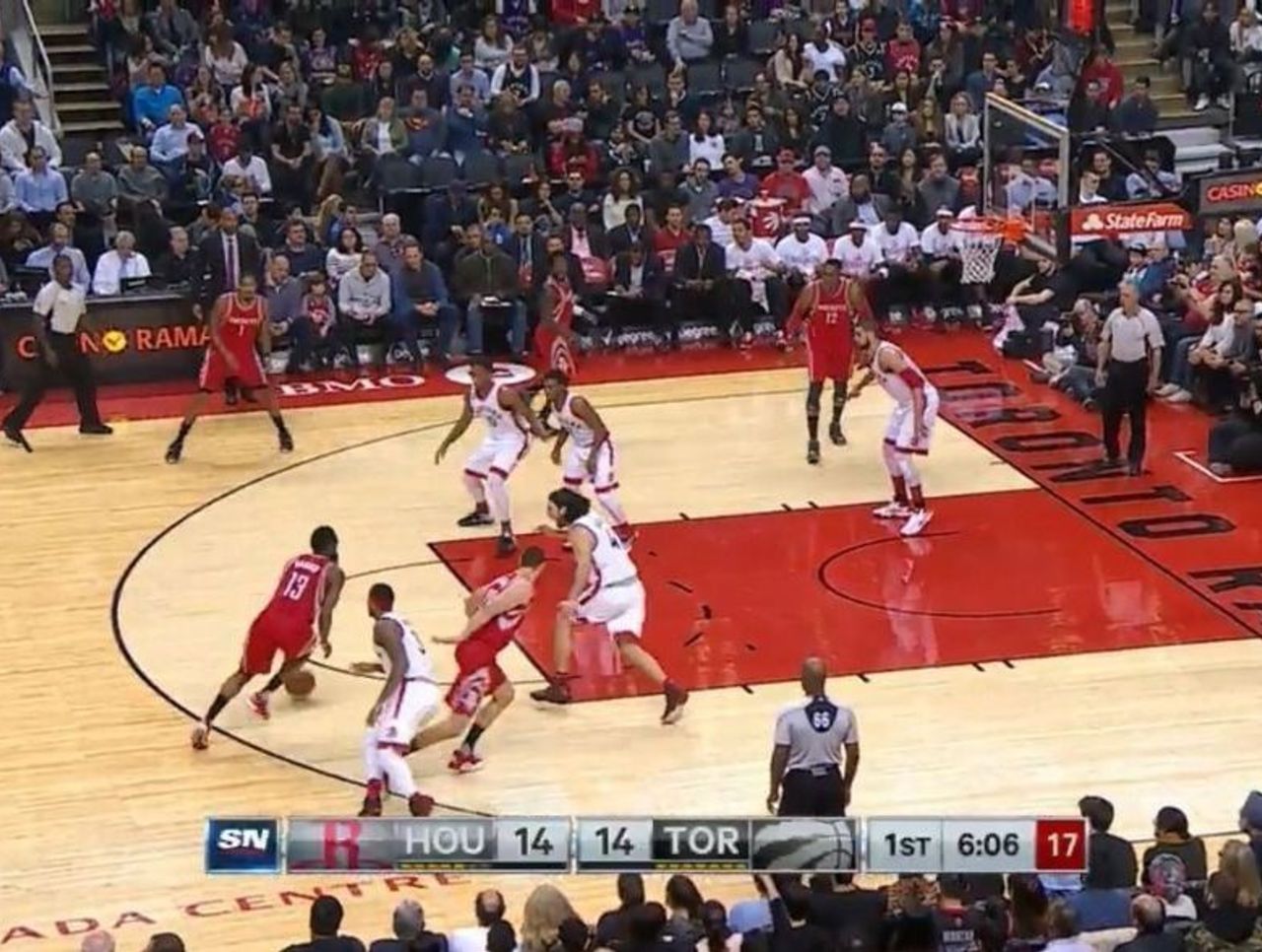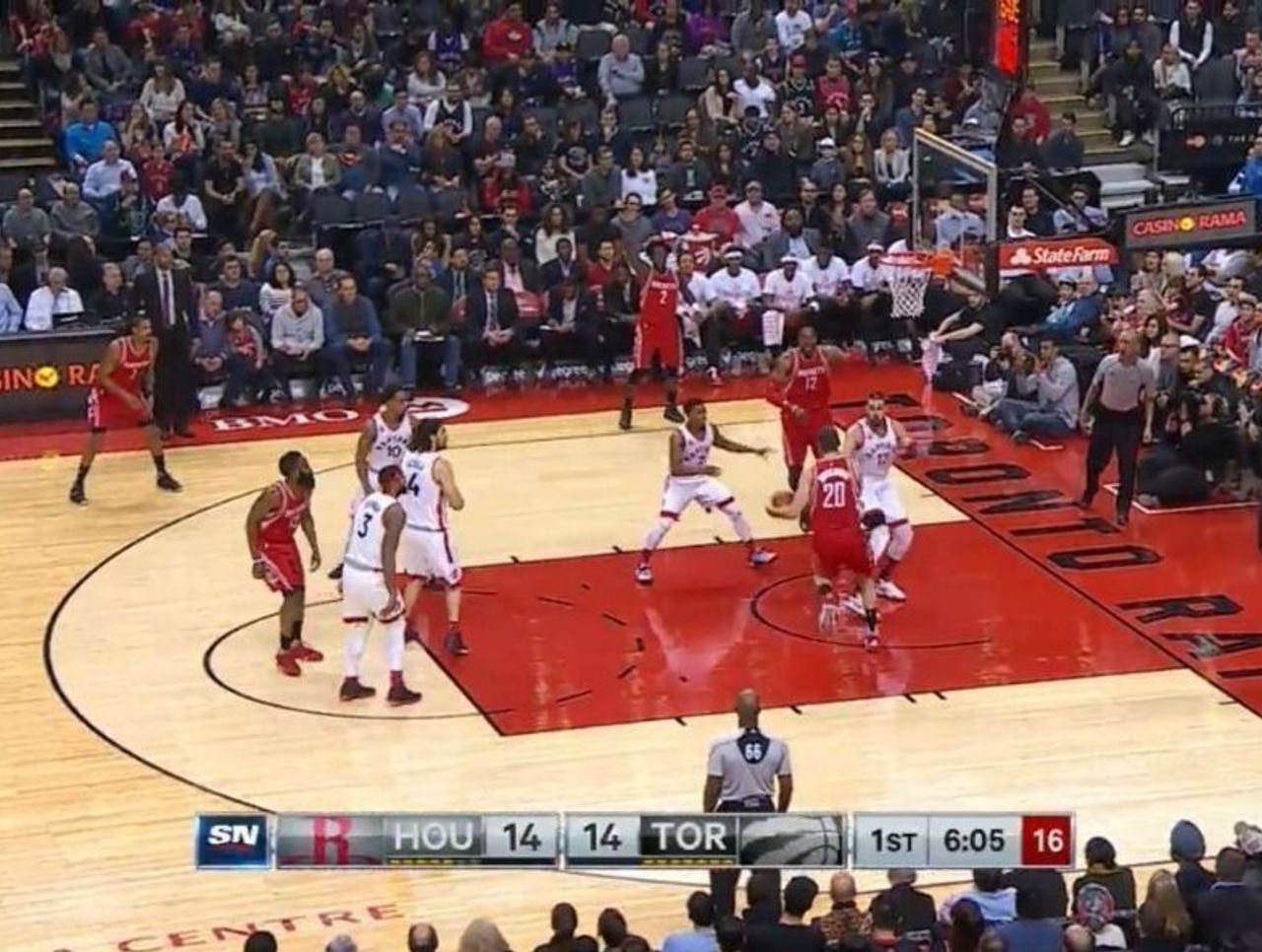3 reasons why the Raptors' defense has slipped
The Toronto Raptors became one of the best success stories of the season after revamping their defense.
After holding the 23rd-ranked defense in 2014-15, the Raptors replaced several liabilities at key positions with three defense-first players in Bismack Biyombo, Cory Joseph, and DeMarre Carroll. Those upgrades, coupled with a seismic shift in defensive philosophy, transformed the Raptors into a top 10 defensive outfit for most of the season.
Since the All-Star break, however, the Raptors have dropped off across the board in just about every defensive metric. They're 6-2 over that span, but that's come on the backs of their top five offense. They're leaking points on the other end.
| Statistic | Pre All-Star break (rank) | Post All-Star break (rank) |
|---|---|---|
| Points allowed | 98.3 (5) | 103.8 (13) |
| Defensive rating | 101.5 (9) | 114.4 (27) |
Here are three reasons why the Raptors' defense has dropped off since the break.
Allowing threes
The Raptors play a conservative defensive scheme that's designed to take away the paint first and foremost. But amid the most 3-point-happy season in NBA history, it's not enough to only defend the rim.
Opponents are shooting 41 percent on 3-pointers against the Raptors since the break. The league average on threes over the season has hovered around 35 percent. That differential of nearly six percentage points is the third-worst mark, behind only the Phoenix Suns and Philadelphia 76ers.
Here's an example of how the Raptors' defense overplays the paint. Notice how two defenders move to shield off the paint against a routine pick-and-roll between James Harden and Donatas Motiejunas.

The extra bodies succeed in getting Harden to cough up the rock. But after the pass gets back to Motiejunas, the Raptors are left scrambling as Patrick Beverley pops open in the corner due to the extra attention sent Harden's way.

Granted, not all of the Raptors' shortcomings defending the 3-point line are attributable to strategy. Some of it is just variation within an eight-game sample that includes a 50-point outburst by Damian Lillard and a rare day off from Kyle Lowry for rest.
Nevertheless, the Raptors have had this problem for most of the season. They allow the second-highest opposing 3-point percentage in the league, and while they've succeeded in shielding off the paint , that's only half of the equation on defense.
Tighter defensive rotations
Like every other element of basketball, defense is one part schematics and one part execution. The Raptors have begun to fall short on the latter.
Toronto boasts a decent crop of perimeter defenders to make up for some lackluster frontcourt players. That means the likes of Joseph, Kyle Lowry, and DeMar DeRozan have to be sharp at all times.
They haven't been quite so keen of late.
Fatigue might be catching up with the Raptors. DeRozan and Lowry both rank in the top 10 for most minutes played this season, while Joseph has already logged a career high in minutes played. Head coach Dwane Casey relies heavily on his guards to carry the offense, and to expect them to shoulder the burden on the other end is asking for a lot.
Nevertheless, the Raptors have been burned by perimeter players. Harden scored 40 a game after Lillard had 50. Even a bench player in Doug McDermott scored 30 two weeks ago.
It also doesn't help that the Raptors' bigs have continued to struggle. Luis Scola, 35, remains one of the worst players in the league at defending the 3-point line, along with offering nothing in terms of rim protection, while Jonas Valanciunas' lack of foot speed continues to plague him when asked to defend on the move. That's why the starting pairing is routinely replaced by Patrick Patterson and Bismack Biyombo for key possessions.
Even with their upgrades, the Raptors simply don't have very much margin for error when it comes to their defense. A little slippage by the guards goes a long way.
Adapt or die
More worrisome is the drop-off of Toronto's best unit, which features Lowry and four bench players. That combination carried the Raptors over their recent 11-game win streak, but teams are starting to clue in.
That Lowry-Joseph-Ross-Patterson-Biyombo lineup is coughing up a whopping 128.6 points per 100 possessions since the break, which has turned their greatest strength into their biggest weakness.
An inability to rebound has befallen the unit. They're only grabbing 65.9 percent of available defensive rebounds, which isn't a surprise considering Biyombo is the only plus-rebounder in the bunch. Teams are attacking the glass against Toronto's super-sub lineup with great success.
Over their recent slide, Casey has repeatedly turned to his once-trusty combination to stop runs or extend leads. But that's only made matters worse.
The league has adapted. It's the Raptors' turn to counter the counter.
HEADLINES
- Capture the Flagg: Where No. 1 pick might land, and how he could fit
- Ant goes off for 36 to lift T-Wolves past Warriors in Game 3
- Mazzulla: 72 hours before Game 3 were 'dark, but in a good way'
- Pritchard provides spark off bench as Celtics rout Knicks in Game 3
- Porter playing well for Nuggets despite sprained shoulder